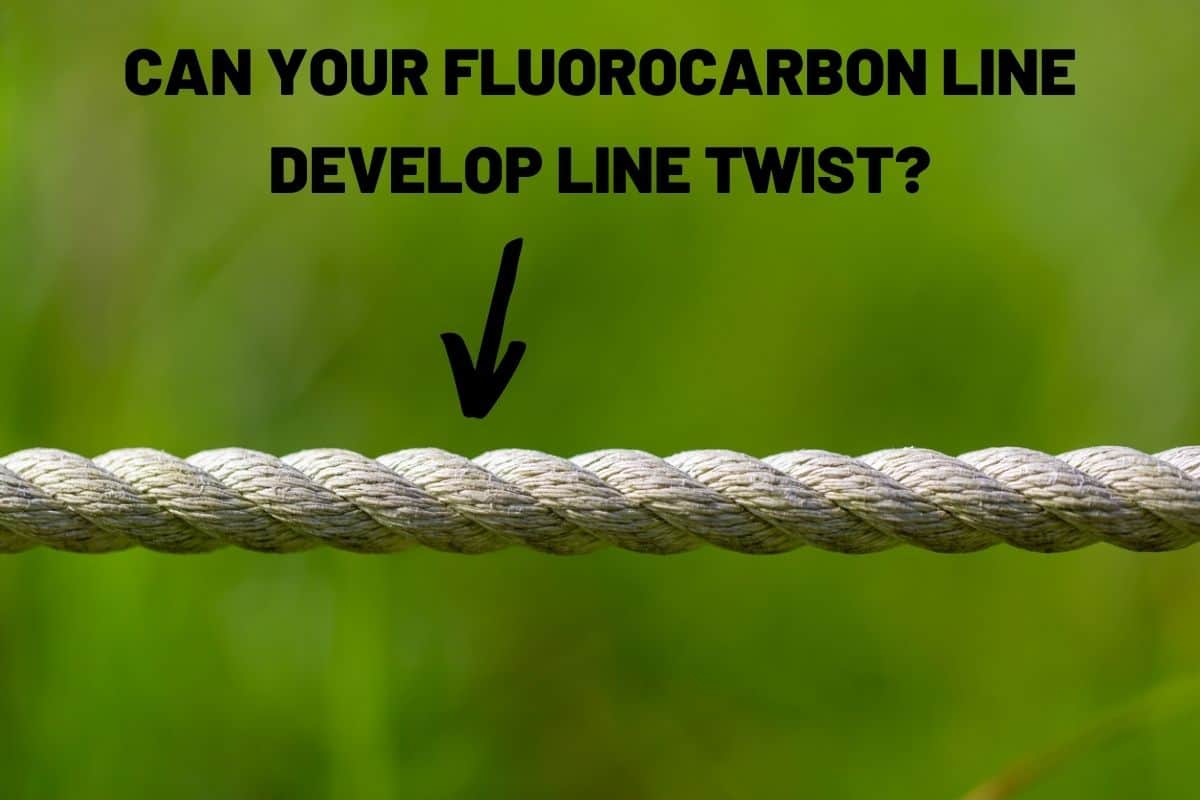
Fluorocarbon lines were marketed and only used as leader lines in the past. Since then, fluoro lines have evolved and are specifically made to be used as a mainline. The hard-to-use fluoro lines of the past are no more, but can they become twisted like some of the other lines.
Fluorocarbon lines can resist developing line twists more than other fishing lines because of line stiffness. Line twist can easily be unwound by dragging the unspooled line behind a boat or unspooling and stretching the line.
Fluorocarbon lines are fantastic fishing lines but do, like other lines, sometimes get twisted.
Let’s see why line twists and how to fix this issue for good.
Can Fluorocarbon Lines Develop Line Twist?
Fluorocarbon lines can become twisted. However, it’s generally less prone to twisting because the line is stiffer than other lines.
In recent years, fluorocarbon has been developed to be used as mainline. These fluoro mainlines are made to be softer and more flexible.
Fluorocarbon lines are manufactured from polyvinylidene fluoride (PVDF). The polymer is almost twice as dense as nylon fishing lines and is more rigid and physically heavier. The relatively rigid structure of fluorocarbon lines resists twisting.
Instead, the fluoro line tends to curl up on itself rather than turning into a tight bunch.
Line twists can become visually apparent in fluoro lines much sooner than other lines because it does not “absorb” the twist.
3 Reasons That Cause Fluorocarbon Lines Twist
The following are the three most common causes of fluorocarbon line twisting.
- Spooling your spinning reel incorrectly
- Lures and bait cause the line to twist
- Reeling in line against a fish pulling drag
Let’s unpack each of these more closely so you will never have to untwist your fluoro line.
Spooling Your Spinning Reel Incorrectly
Looking at your spool with the new line, you’ll notice that one side of the line spool has a label, and the other side is blank.
The labelled end of the spool is the top side, and the empty end is the bottom.
When winding a line onto a spinning reel, the line’s direction unrolls from the bulk spool onto your reel’s spool is critical.
The correct way to put the line onto your spinning reel is to place the bulk spool onto its side, label up, and feed the fluoro line through the line guide closest to the reel.
Attach the line to the reel spool. Close the bail arm and start reeling the line onto the spool.
When reeling the line onto the reel spool, apply some tension onto the line to seat the line nicely and tightly onto the spool.
Run the line through a damp cloth to save your fingers from being burned by the line.
Fill the reel spool to about one-eighth of an inch from the rim.
The fluoro line is now ready to use and will not twist due to the line being loaded onto the spool incorrectly.
Lures And Bait Cause The Line To Twist
Some lures, such as spinners, can often cause line twists.
The spinner’s blade rotates as the lure is retrieved and can often cause the line to twist. A plastic bait where the hook is not hooked perfectly straight into the lure can also cause it to rotate as the line is retrieved.
Just retrieving your bait could cause it to rotate or spin in the water as it is being reeled in. This could result in a twisted line.
A good quality swivel located between the mainline and the lure or bait will reduce the line twist as the swivel allows the line to rotate back into its neutral position.
Reeling While Fighting A Fish With A Spinning Reel
Another common cause of line twist happens when fighting a fish.
A good habit to get in is not trying to reel in the fish as it pulls drag.
As the fish thrashes and pulls drag, the fish is spinning in all directions. You’re creating more tension by reeling in the line simultaneously, making the line twist worst.
How To Untwist A Fluorocarbon Line
Below are the two standard methods used to untwist a fluorocarbon line.
Method #1:
Start by removing the lure or any tackle attached to your line.
Pull most of your line out of the reel and drag it behind the boat if you’re boating.
The water resistance rubbing against the line while moving will untwist the line.
Only a few minutes of driving is required to get the job done.
Reel in the line when driving. The water resistance will help keep tension on the line.
Method #2:
If you’re not on a boat, attach a good quality swivel a foot or two from the end of the line.
Tie the end of the line to a sturdy object or ask someone to hold the end of the line firmly.
Walk away from this point, letting the line unspool itself until you reach the point where the line is off the reel.
Now pull on the line and maintain the tension for a minute or two.
Stretching the line allows the line to untwist itself at the swivel end.
Release the end of the lien by untying it or letting the person let go of the line.
Reel in the line while applying a little pressure on the line using a cloth.
Happy Fishing & Tight Lines
